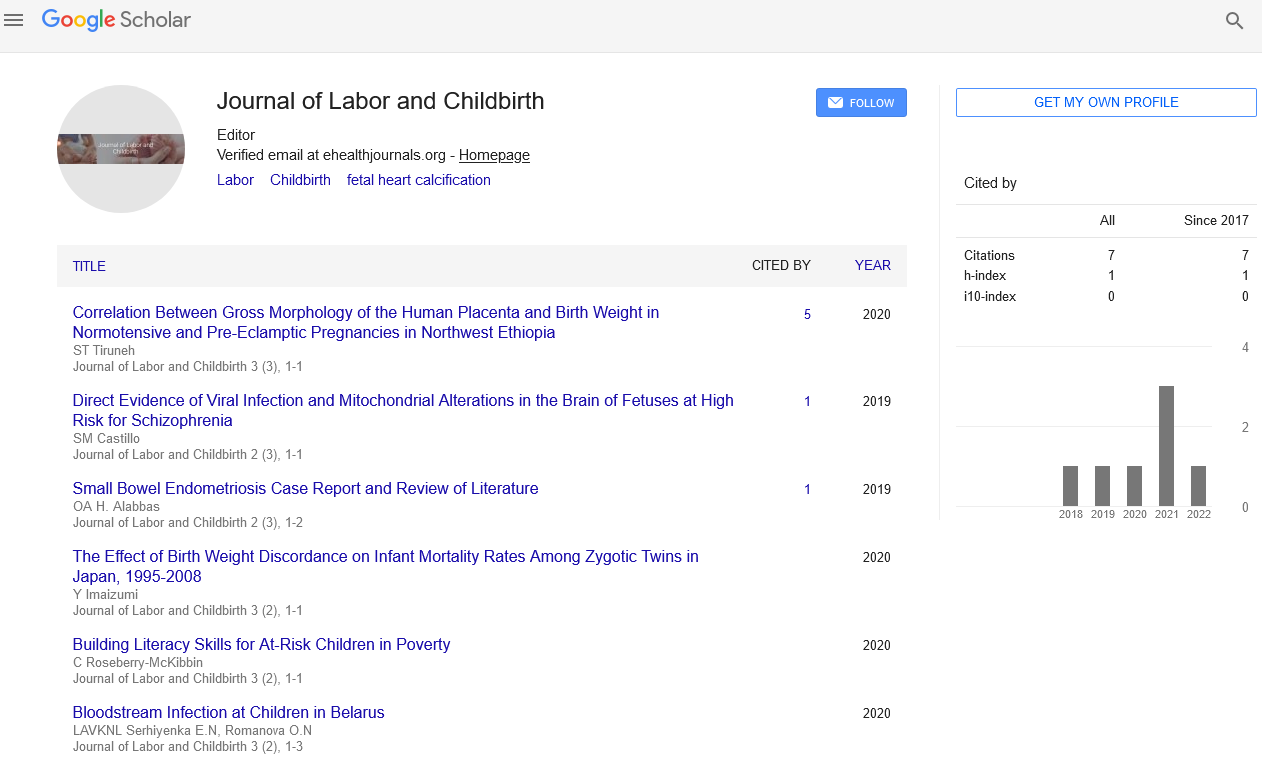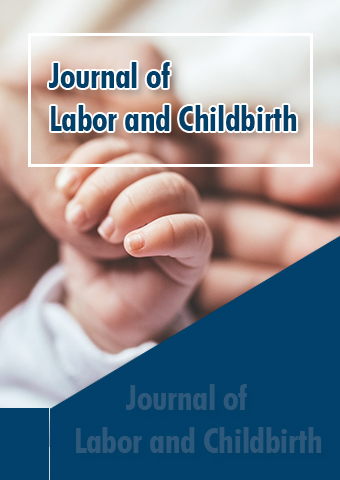Perspective - Journal of Labor and Childbirth (2023) Volume 6, Issue 5
Breast Cancer Risk after Recent Childbirth: Understanding the Complex Relationship
- Corresponding Author:
- Akira Yakita
Department of Gynecology,
Roy University,
Kobe,
Japan
E-mail: yakita@nazan-u.ac.jp
Received: 04-Sep-2023, Manuscript No. jlcb-23-118891; Editor assigned: 07-Sep-2023, PreQC No. jlcb-23-118891 (PQ); Reviewed: 21- Sep-2023, QC No. jlcb-23-118891; Revised: 03-Oct-2023, Manuscript No. jlcb-23-118891 (R); Published: 31-Oct-2023, DOI: 10.37532/ jlcb.2023.6(5).139-140
Introduction
Breast cancer remains one of the most prevalent and challenging health issues facing women today. While substantial progress has been made in understanding the risk factors and mechanisms underlying this disease, new questions and concerns continue to emerge. Among these concerns, there is a growing interest in exploring the relationship between breast cancer risk and recent childbirth. This article will delve into this complex issue, shedding light on the various factors that play a role in breast cancer risk following childbirth.
Description
Childbirth and breast cancer
Childbirth has long been viewed as a protective factor against breast cancer. It is well-documented that women who have given birth are generally at a lower risk of developing breast cancer compared to women who have never had children. The protective effect of childbirth is primarily attributed to changes in hormonal levels during and after pregnancy, as well as the differentiation of breast cells into a more mature, less susceptible state. However, the relationship between childbirth and breast cancer risk is more intricate than it initially appears.
Short-term risk
Recent childbirth, particularly in the first few years following pregnancy, may actually be associated with a short-term increase in breast cancer risk. This phenomenon is referred to as the “short-term breast cancer risk window.” During this period, women may experience a higher likelihood of developing breast cancer compared to nulliparous women (those who have never given birth). Several factors contribute to this increased risk:
Hormonal changes: Pregnancy is characterized by significant hormonal fluctuations, including increased levels of estrogen and progesterone. These hormonal changes can influence the development and progression of breast cancer.
Breast tissue changes: Pregnancy also triggers changes in the breast tissue, such as increased cell proliferation and branching of ductal structures. These changes can increase the likelihood of genetic mutations occurring, potentially leading to cancer.
Delayed breastfeeding: Some women delay or forego breastfeeding, which can influence the short-term risk of breast cancer after childbirth. Breastfeeding is known to have protective effects against breast cancer.
Long-term protection
While the short-term risk of breast cancer after childbirth is a concern, it is essential to recognize that the long-term effects of pregnancy offer substantial protection against the disease. This protection becomes more evident as time progresses and several key factors contribute to it:
Differentiation of breast cells: Pregnancy triggers the differentiation of breast cells into a more mature state, making them less susceptible to cancer development. This process, known as lobular differentiation, contributes to long-term protection.
Reduced lifetime exposures: Women who give birth tend to have fewer menstrual cycles throughout their lifetime due to pregnancy and breastfeeding. Fewer menstrual cycles mean reduced exposure to estrogen, a hormone linked to breast cancer risk.
Altered hormonal environment: Pregnancy results in a shift in hormonal balance, with lower levels of estrogen and higher levels of progesterone. These hormonal changes provide a protective effect against breast cancer.
Breastfeeding and breast cancer risk
Breastfeeding is another essential factor to consider when examining the relationship between childbirth and breast cancer risk. The act of breastfeeding offers unique protective benefits against the disease. Here’s how:
Delaying menstruation: Breastfeeding delays the return of regular menstrual cycles in many women. Since breast cancer risk is often linked to lifetime estrogen exposure, fewer menstrual cycles mean reduced exposure to this hormone.
Cell apoptosis: Breastfeeding encourages the death of damaged or mutated cells in the breast tissue through a process called apoptosis. This helps eliminate potentially cancerous cells.
Immune system support: Breast milk contains immune-boosting components that can help prevent and combat cancerous cell growth.
Breast tissue involution: After breastfeeding, the breast tissue undergoes a process called involution, during which it returns to a nonlactating state. This process may help remove cells at risk of becoming cancerous.
However, it’s important to note that the protective effect of breastfeeding may vary based on the duration and intensity of breastfeeding. Longer and more exclusive breastfeeding is associated with a more substantial reduction in breast cancer risk.
Hormonal factors and breast cancer
Hormones play a significant role in breast cancer development and pregnancy-related hormonal changes can affect a woman’s risk of the disease. Estrogen and progesterone, in particular, are critical factors to consider:
Estrogen: High levels of estrogen are associated with an increased risk of breast cancer. Pregnancy initially leads to an increase in estrogen, but over the long term, it results in fewer menstrual cycles and lower cumulative estrogen exposure. This reduction in estrogen levels is one of the reasons why childbirth is associated with a decreased long-term risk of breast cancer.
Progesterone: While estrogen is considered a risk factor, progesterone has a more complex relationship with breast cancer. During pregnancy, progesterone levels rise significantly. However, this hormone is also involved in breast cell differentiation, which helps reduce the risk of cancer.
Hormone Replacement Therapy (HRT): It’s worth mentioning that some women who experience early menopause or other hormonal imbalances might undergo hormone replacement therapy. HRT can affect the risk of breast cancer, and its interaction with pregnancyrelated hormonal changes is an important area of ongoing research.
Conclusion
The relationship between recent childbirth and breast cancer risk is multifaceted, influenced by factors such as age, breastfeeding, hormonal changes, genetics and breast cancer subtypes. While pregnancy may be associated with a shortterm increase in risk, it offers significant longterm protection, reducing the lifetime risk of breast cancer. However, individual variations in these factors make it crucial for women to consult with healthcare professionals to understand their unique risk profile.
Ongoing research is continually expanding our knowledge of this complex relationship, offering new insights into the interplay between pregnancy and breast cancer risk. The overarching message is that while recent childbirth may bring temporary concerns, the long-term protection it offers should not be underestimated. Furthermore, the importance of early detection and regular breast cancer screening cannot be overstated, as timely diagnosis and treatment remain the most effective tools in the fight against breast cancer.

